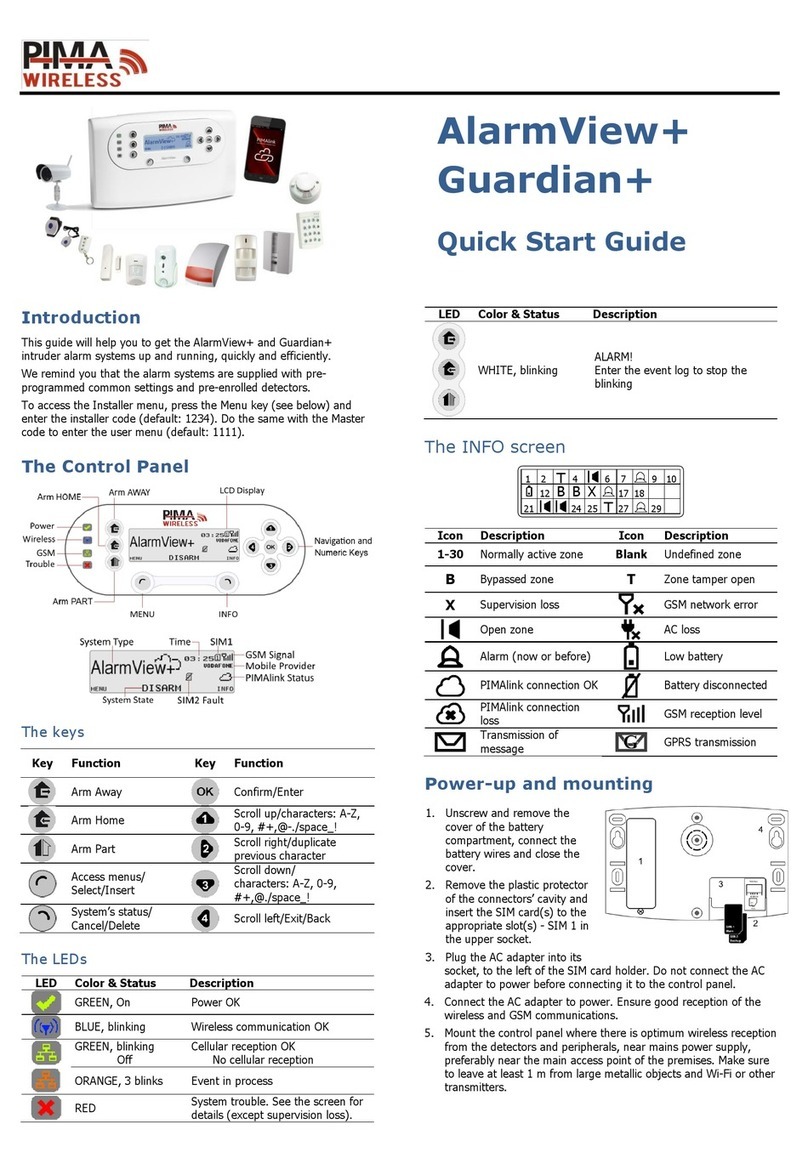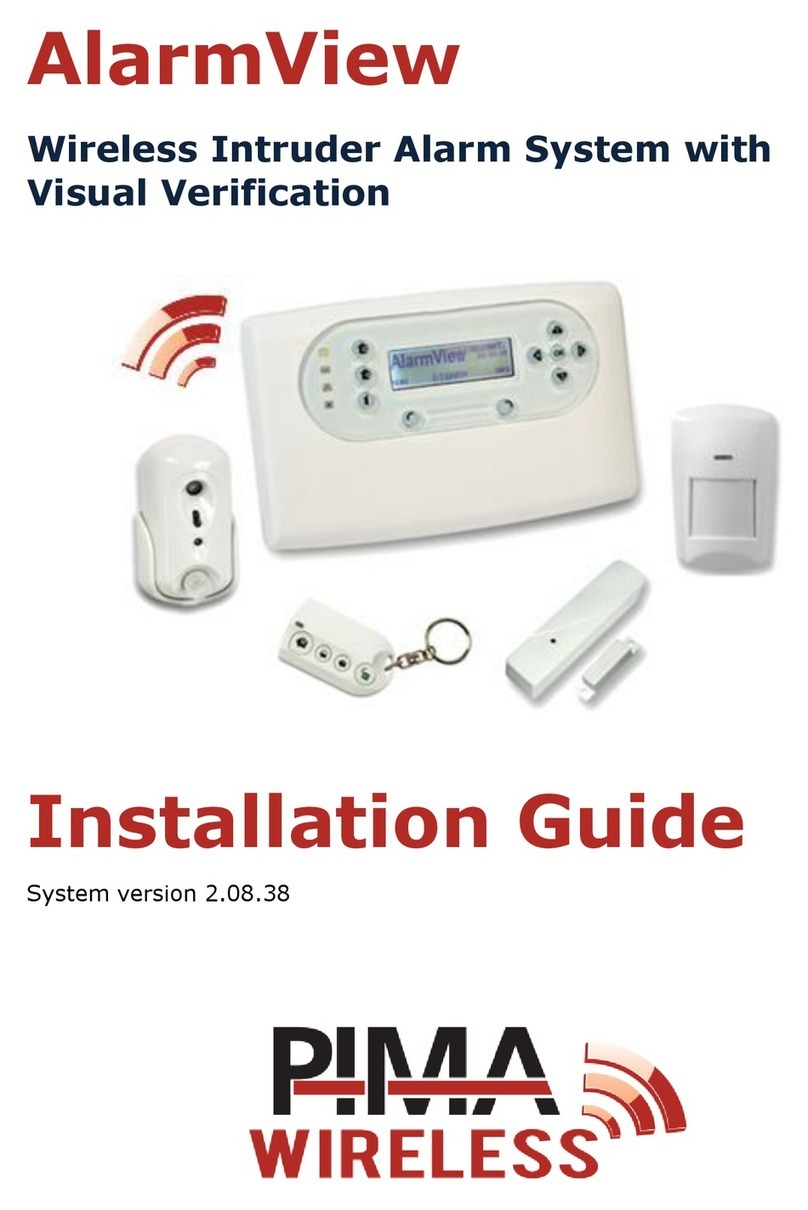Table of contents
1
Table of contents
1Introduction........................................................................................... 5
1.1 Features ..................................................................................................... 5
1.1.1 The AlarmView..................................................................................... 5
1.1.2 The Guardian....................................................................................... 6
1.1.3 The AVR.............................................................................................. 6
1.2 Visual verification......................................................................................... 7
1.3 Technical specifications ................................................................................. 7
2Quick reference guide ............................................................................ 9
2.1 System components ..................................................................................... 9
2.2 The Control Panel......................................................................................... 9
2.2.1 The keys........................................................................................... 10
2.2.2 The display........................................................................................ 11
2.2.3 Audible indicators............................................................................... 11
2.2.4 LED indications .................................................................................. 12
2.3 The INFO screen ........................................................................................ 12
2.3.1 How to access the user menu............................................................... 13
2.4 The Master and Installer default passwords.................................................... 13
3Options menu....................................................................................... 14
3.1 Global Settings .......................................................................................... 14
3.2 Zone bypass.............................................................................................. 14
3.3 Contacts ................................................................................................... 15
4Event Log Menu.................................................................................... 16
4.1 Log entries examples.................................................................................. 16
5Service menu ....................................................................................... 17
5.1 Tests........................................................................................................ 17
5.1.1 Zone ................................................................................................ 17
5.1.2 External siren .................................................................................... 18
5.1.3 Built-in siren...................................................................................... 18
5.1.4 Communication.................................................................................. 19
5.1.5 System self-test................................................................................. 19
5.2 Enable programming .................................................................................. 19
5.3 Display version .......................................................................................... 20
5.4 System reset............................................................................................. 20
6Passwords Menu .................................................................................. 21
6.1 Regular users ............................................................................................ 21
6.2 Master user............................................................................................... 22
6.3 Duress code .............................................................................................. 22
7Set Clock Menu..................................................................................... 23
7.1 Time ........................................................................................................ 23
7.2 Date ........................................................................................................ 23
8Stop Communication menu .................................................................. 24
9How to Operate Your Alarm System ..................................................... 25
9.1 Arming levels ............................................................................................ 25
9.1.1 AWAY ............................................................................................... 25
9.1.2 HOME ............................................................................................... 25
9.1.3 PART ................................................................................................ 25
9.2 How to arm the alarm system ...................................................................... 26
9.2.1 In the AlarmView and Guardian ............................................................ 26
9.2.2 In the AVR ........................................................................................ 26
9.3 How to disarm the alarm system .................................................................. 26
































